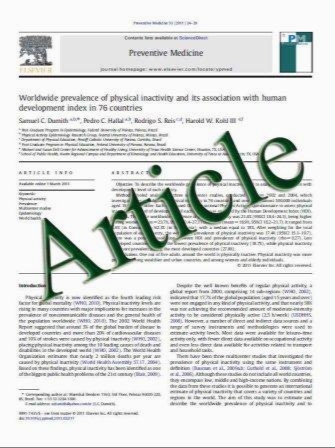Artifacts of the electrode in cochlea implantation and limits in analysis of deep insertion in cone beam tomography (CBT)
- نوع فایل : کتاب
- زبان : انگلیسی
- مؤلف : C. Güldner · S. Wiegand · R. Weiک · S. Bien · A. Sesterhenn · A. Teymoortash · I. Diogo
- چاپ و سال / کشور: 2011
Description
Until now more than 250,000 cochlea implantations have been performed worldwide. The surgical procedure is well standardized. A discussion about the kind of postoperative radiological control has started since cone beam tomography (CBT) has been established in ENT and hearing preservation operations have come more into the focus. Further research has been concentrated on the role of CBT and the insertion of the basal turn. The aim of this study was to look for the possibilities of CBT and deep insertion. The second aim was to analyze the artifacts of cochlea implants in CBT. Three human cadaver ears were implanted with a Xex soft electrode of MedEl© in a standard operation procedure with round window insertion and a full insertion. Afterwards 72 CBT sets per ear were performed with diVerent X-ray-tube currents (2–10 mA), voltages (72–90 kV), and exposure times (9 and 17 s). On each data set, the radiological diameter of the electrode 9 (basal), electrode 2 (apical), the diameter of the cable next to the electrodes 9 and 2, and the associated diameter of the cochlea next to the electrodes 9 and 2 were evaluated. Additionally, a comparison to the real diameter was done. The mean radiological diameters of the measure point at electrode 9 were: electrode = 1.19 mm; cable = 0.65 mm; cochlea = 1.77 mm. Results for measure point at electrode 2 were: electrode = 0.98 mm; cable = 0.48 mm; cochlea = 1.21 mm. The real diameters were at electrode 9 in lateral view 0.58 mm and in top view 0.63 mm and at electrode 2 in lateral view 0.36 mm and in top view 0.50 mm. DiVerences between the diameters of the electrode 9 and 2 were highly signiWcant. Interestingly, the real diameter of the electrode is half in comparison to the radiological one. Also in comparison to the diameter of the cable and the associated electrode is nearly half. Nearly 50% artifact exists on radiologic evaluation of the diameter of the electrode. Varying the X-ray adjustments did not lead to optimized results. The diYculties in evaluating a cochlea electrode with CBT could be shown. The high rate of artifacts (50%) makes it extremely diYcult to predict the inserted scale, especially when evaluating the intracochlear position in the medial and apical turn of the cochlea. In conclusion, until now CBT allows a relatively safe evaluation of the electrode in the basal turn, whereas in deep insertion it is not really a useful tool to answer the question of insertion trauma, implanted scale, or scale displacements
Eur Arch Otorhinolaryngol,Received: 4 May 2011 / Accepted: 5 July 2011 © Springer-Verlag 2011


